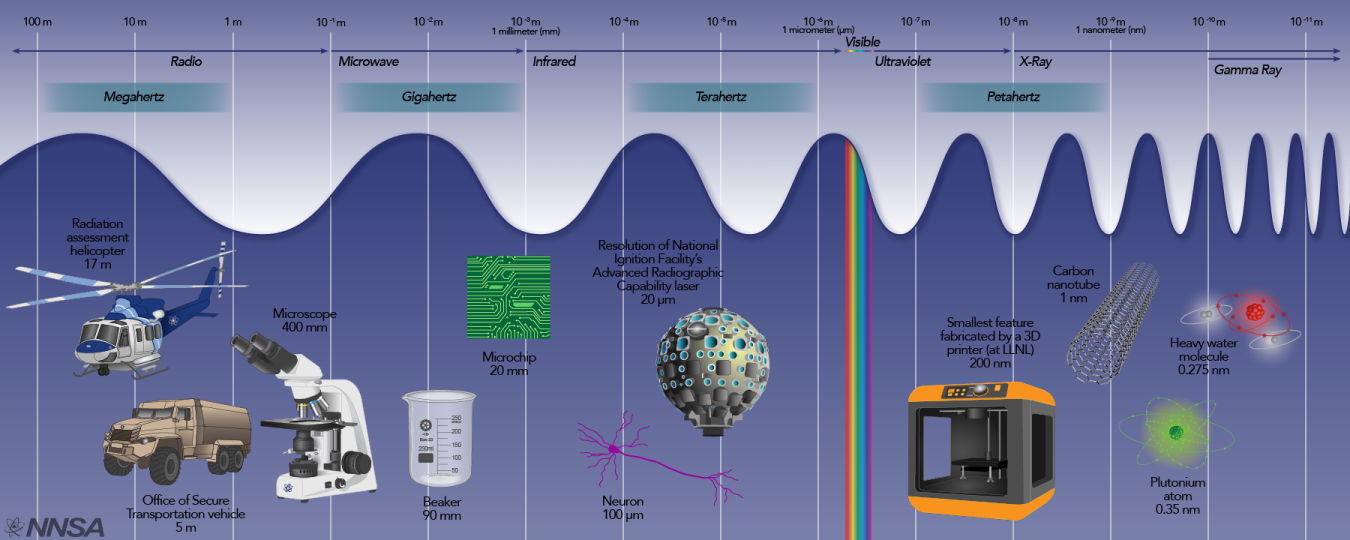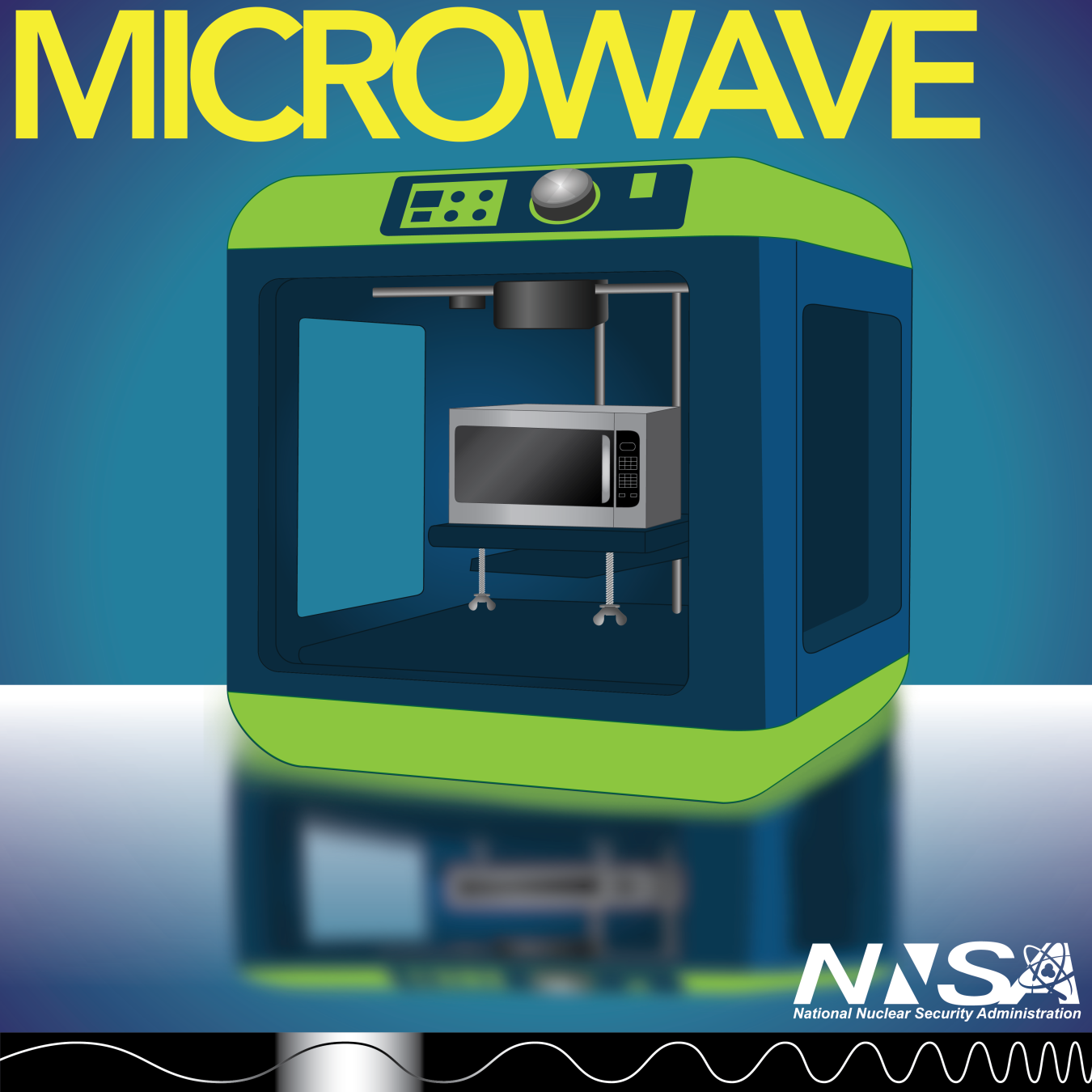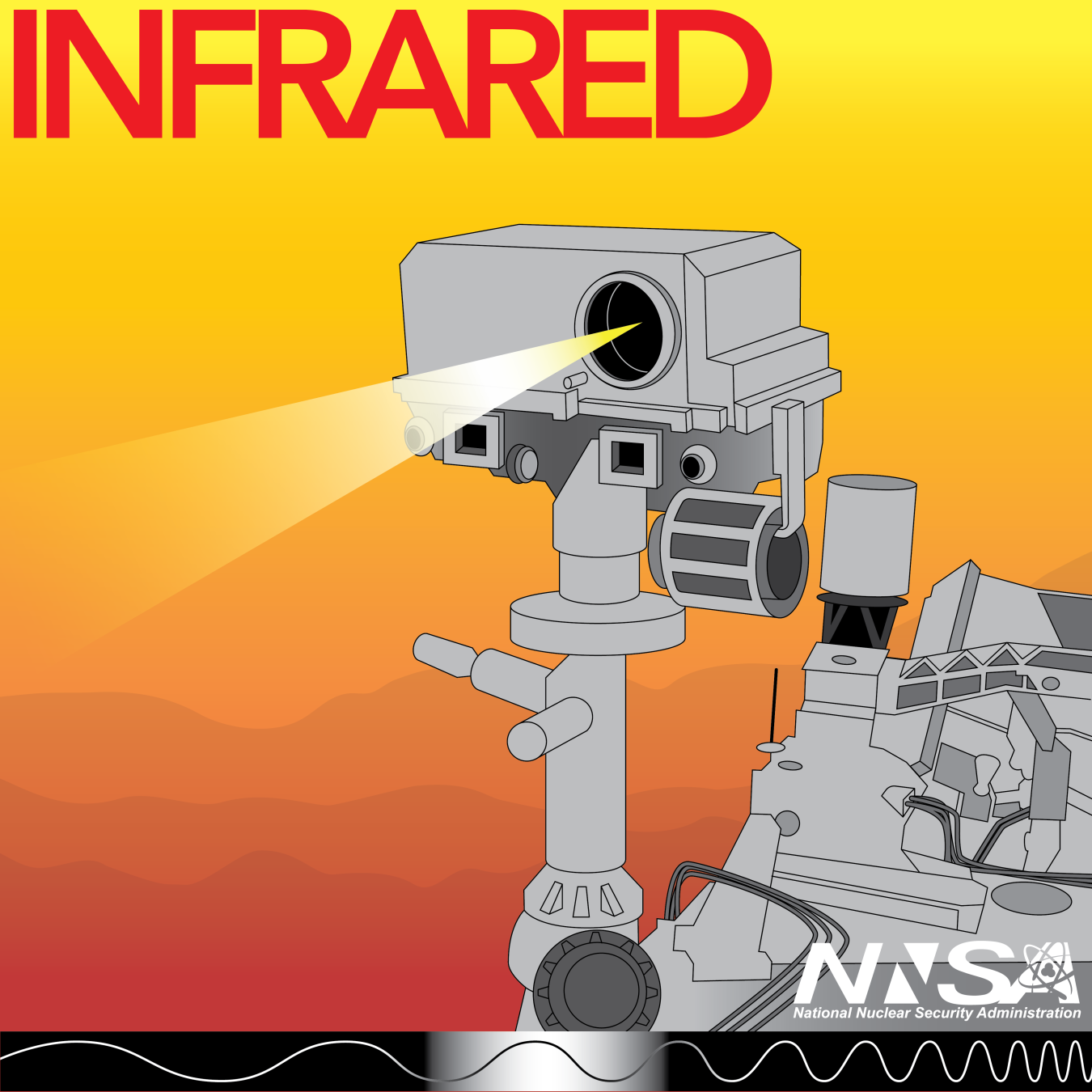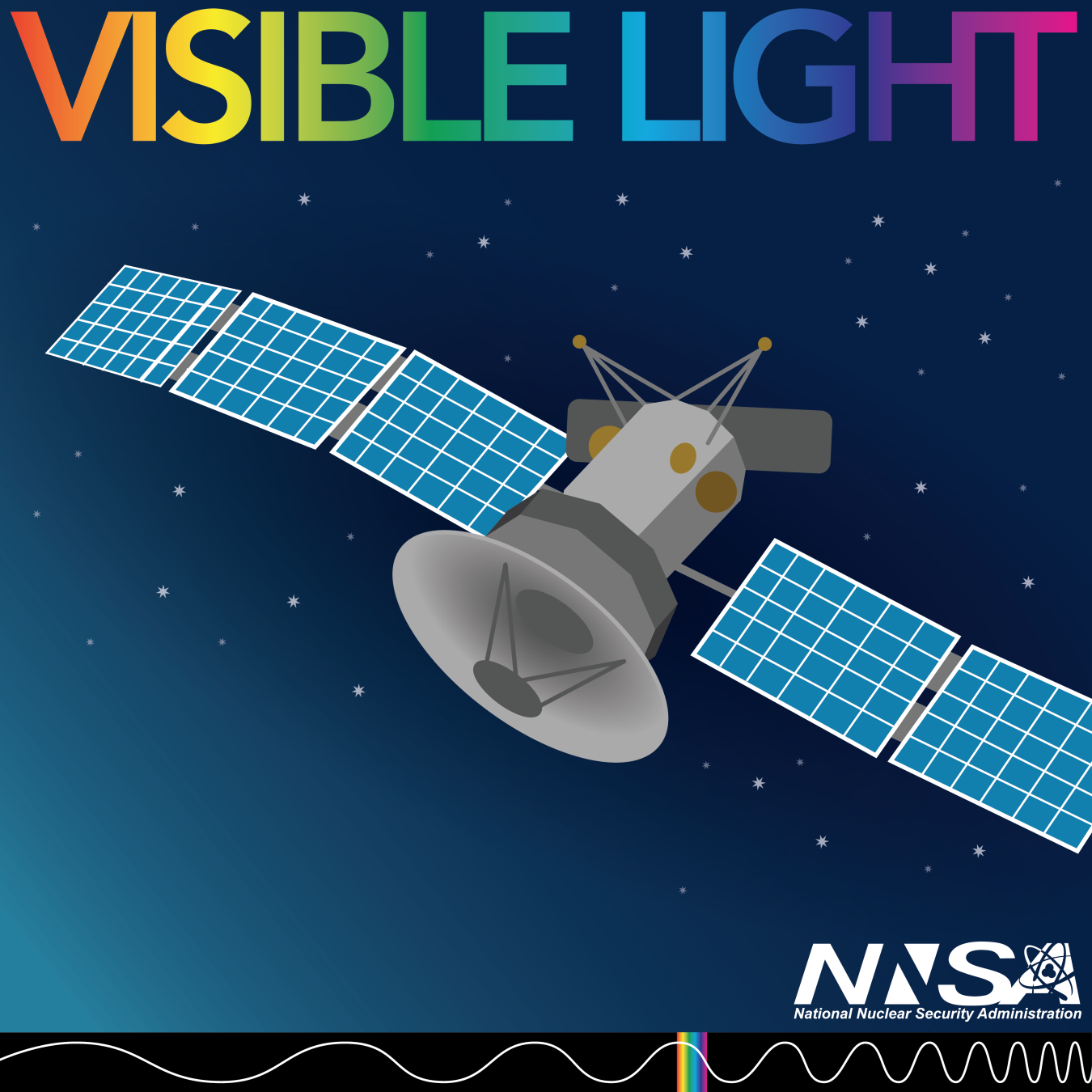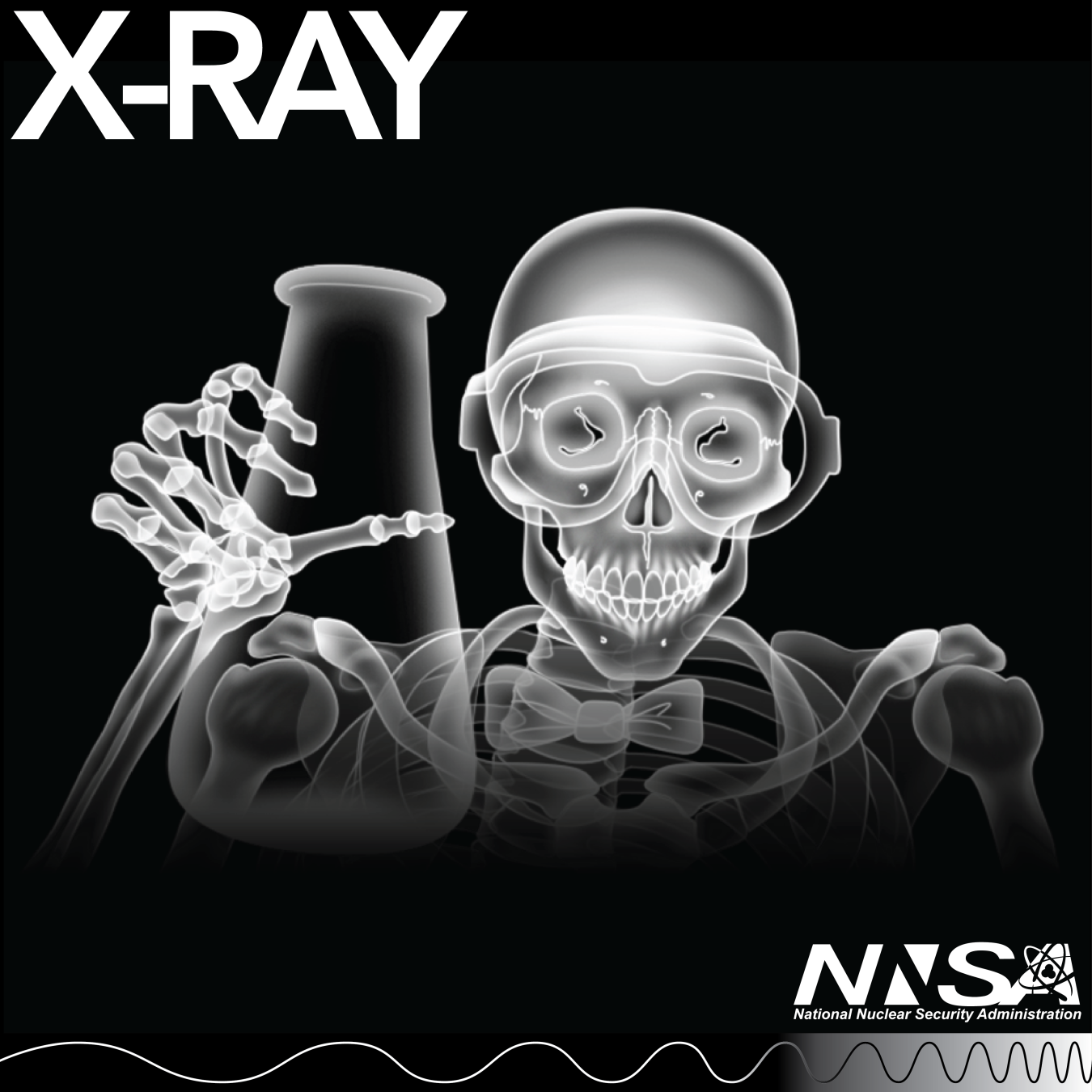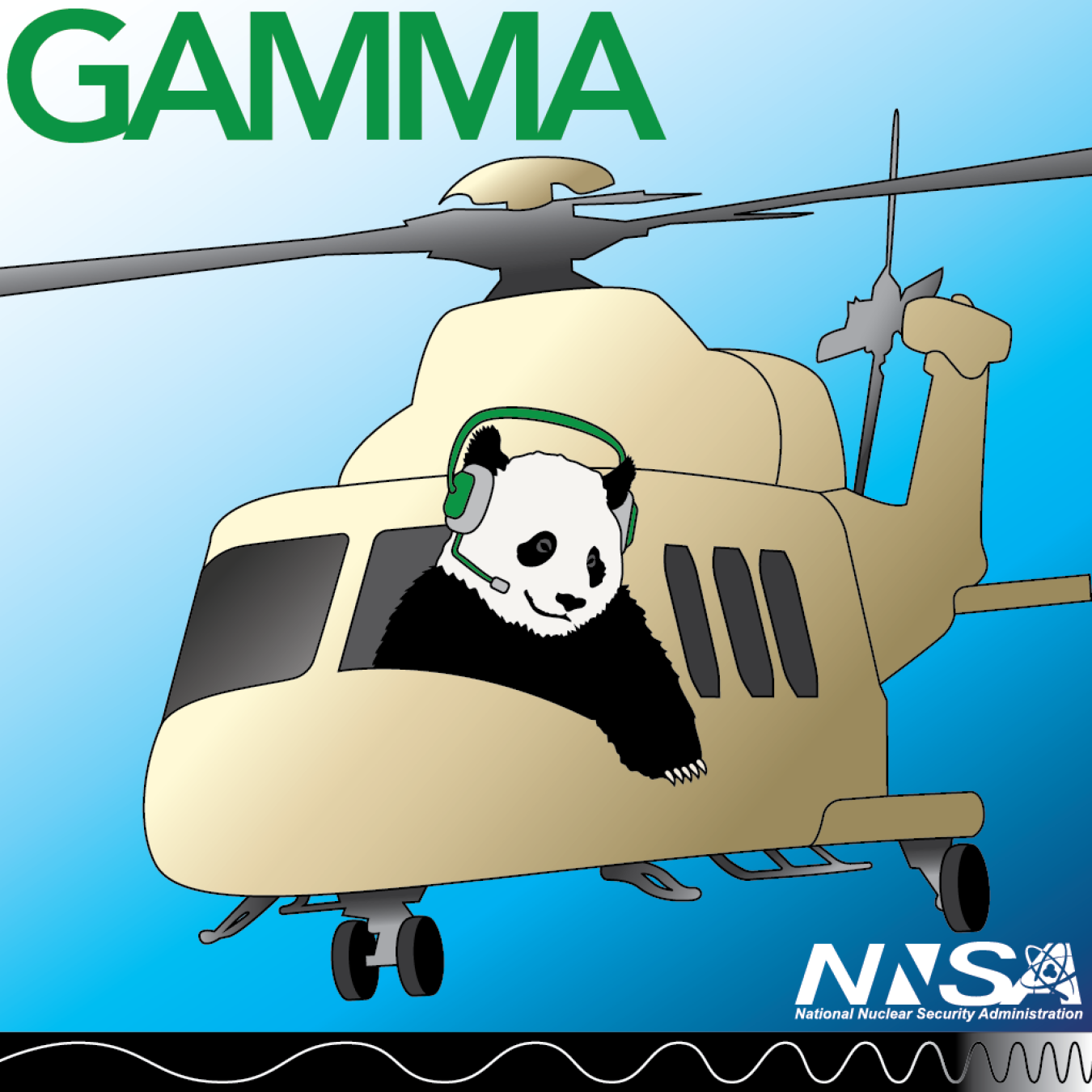At NNSA’s labs, plants, and sites, research supporting our vital missions reaches across the electromagnetic spectrum – from radio waves to gamma rays. Sometimes that innovation spills into other areas, too, enabling tomorrow’s technological wonders.
National Nuclear Security Administration
June 16, 2025At NNSA’s labs, plants, and sites, research supporting our vital missions spans the entire electromagnetic spectrum – from radio waves to gamma rays. It also helps us do our jobs. And sometimes that innovation spills into other areas, too, enabling tomorrow’s scientific and technological wonders.
Radio waves have been used to improve radar data, create ultra-low cost antennas, and transform how we – and maybe the world – build electronics. Read more about how we use radio waves in NNSA.
Microwaves enable our labs, plants, and sites to cast metals more economically, 3D print much larger and elaborate objects, and more. Read more about how we use microwaves in NNSA.
Infrared radiation helps us identify what extraterrestrial rocks are made of from millions of miles away and it helps us understand how water reacts when it’s under enormous pressure. Learn more about how we use infrared in NNSA.
Visible light is used throughout the Nuclear Security Enterprise. It's used to ensure the materials we make are pure, to watch out for rocket launches, and to inspect scratches on parts that MUST work. Learn more about how we use visible light in NNSA.
Ultraviolet radiation passes through giant crystals as laser light aimed at tiny targets in the National Ignition Facility. It has also been tapped as a way to kill pathogens in a crisis. Learn about how we use ultraviolet light in NNSA.
X-Rays are used to ensure the nuclear stockpile will be ready if needed. They are used to take a snapshot during experiments and to ensure that parts are able to withstand weapon-like conditions. Learn about how X-rays are used by NNSA.
Gamma rays help NNSA detect nuclear material from on high and are key to a mission that’s out of this world. And then there’s the PANDA manual. Learn how gamma rays are used at NNSA.


